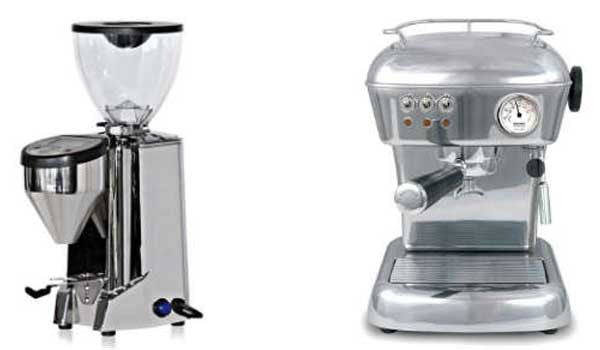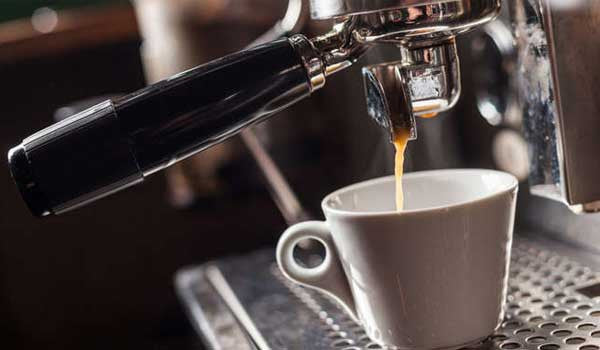
If you’re familiar with espresso and have fallen in love with it (like us!), then you know that sometimes it feels like it would be impossible to replicate it in your own kitchen. But how can you get started making your own espresso? We will get you pointed in the right direction, so you can start pulling delicious shots in no time!

Before you get started, make sure you have the proper ‘tools’. These espresso making ‘tools’ Can make or break a great drink, so pay close attention if you are preparing to take the leap.
We refer to these as "brewing variables." A majority of these apply when making any kind of coffee, but some of them are particularly unique to espresso. So let's take a closer look...
Your espresso only tastes as good as the quality of water make it with. Unwelcome minerals, scale, and sediment will doom your espresso drink if you don't deal with it from the very start. Before you get into the process too far, make sure to learn as much as you can about the quality of the water that you have available.
A majority of hardware store will have affordable water testing kits. You can also get in touch with your local water provider to get additional information about what exactly they are pumping into your pipes. Once you have that information, check out the water standards from the Specialty Coffee Association of America.
However, no matter what your situation happens to be, you can keep most of the nasty things out by just using a simple carbon filter or using filtered water every time.
Before you brew your coffee beans, you need a quality grind. You will need to have a finer grind to make espresso than most other brewing methods, with the particles being about the same size as table salt.
Later on you will to achieve different results you will learn ways to manipulate the grind.
For the standard serving size - which is a "double shot" - we prefer using from 18 to 21 grams worth of ground coffee. As you are adding more coffee, the shot increases in both intensity and body. Don't hesitate to make adjustments to your dose according to what your taste is and utilize the troubleshooting tips we have provided below.
When you use a tamper to compact the ground coffee, it restricts the water flow, which forces the water and coffee to interact. Get started with a 30-pound press (you can use your bathroom scale to get a sense of what it is like), and apply it evenly. For even extraction, it is essential to have a level, firm tamp.
When preparing your coffee, the ideal water temperature is heating it to 195 to 205 degrees F, and some espresso machine let you control the temperature. (A "PID controller" makes this possible for most systems.) If your espresso machine does this, then play with the range in order to find out what you like the most.
When brewing drip coffee, you measure both the water input and coffee input. But when you are making espresso, it is both the beverage output and coffee input that need to be measured.
Depending on your basket size and dose amount, aim for around 2 ounces worth of espresso, which is enough to fill up a large shot glass. A 30-gram yield tends to be a safe place for you to start if you are going to weigh your shots.
Note: Density of espresso is sometimes tricky, since the gasses that are trapped inside of the crema can create heady, fluffy shots that weight just 30 grams, or silky and thin shots weighing up to 60 grams. You should be able to get a decent crema with many espresso blends - around 1/4 inch in total - and for a 2-ounce shot, a total mass of around 30 to 40 grams.
However, some coffees skew in one direction or the other, which leads to “crema bombs” that might be less dense or juicier. Whichever way you prefer your espresso, 30 grams or 2 ounces is our reference point as a good place to start, but feel free to make adjustments according to your liking.
Using our recommended yield and dose, around 25 to 30 seconds should pass from the start of the extraction to the minute your glass is completely full.
Now that we have covered these tips, we are almost ready to get going. First of all, let's talk about the gear we will need:

The espresso machines we like the most all feature a sensible interface, stable temperatures and solid components. If you are shopping for a new machine, then you can be confident that each model on our website meets all of these criteria. If you're looking for something in a lower price range, we recommend checking out this guide for the best espresso machines. For specific recommendations, skip to the end of our series.
If you want to have consistently delicious espresso, it all begins with having a consistent grind to your coffee. In order to get the most from your beans, select an espresso grinder that features many adjustment steps and can grind finely.
To begin, grab a bottomless or two-spouted portafilter and put in a double basket (most likely it will be the largest basket you have received).
For even extraction and a secure "coffee puck," choose a tamper that snugly fits your portafilter. A majority of baskets have a 58 millimeter diameters, however we have tampers available in a wide range of sizes. We highly recommend that you go with the Espro Calibrated Tamper if you are serious about getting your technique refined. Or, if you’re a coffee shop owner (or someone that just hates using tamper and doesn’t mind spending a pretty penny), the PuqPress Automatic Tamper is an extremely convenient alternative.
You will be much more prepared for accuracy if you have a gram scale. With a high quality scale, you’ll be able to diagnose problems and produce consistent results. We prefer those that have low resolutions, which reads in 0.1 to 1-gram increments. We also recommend that you weigh both yield and dose.
You need something to catch your ‘liquid gold’. If you want to track of the amount of espresso you are pulling, then a volumetric shot glass is something that can help you with, particularly if you don't happen to have a scale on hand.


Even when you believe you have every step figured out, at times, it still doesn't taste right. So if your espresso doesn't taste the way you wanted it to, think about what might appear to be off and then try out some of the following tricks.
In our experience, if it is still missing the mark, make sure that you are starting out with a high quality burr grinder and good, fresh coffee beans. The vast majority of ‘espresso quality’ problems we’ve seen stem back to those two factors.
Comments will be approved before showing up.
Cameron Clark
Author